Efan X4 LCD charger
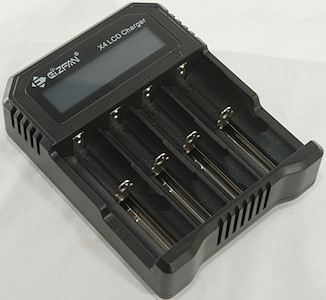
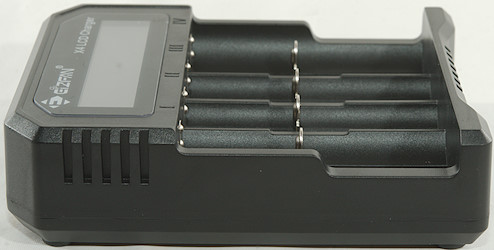
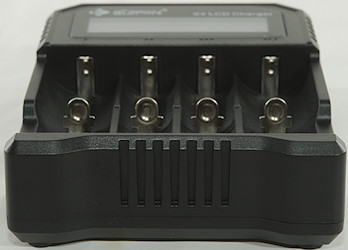
This is a 4 slot charger from Efan (Eizfan) with a good selection of charge currents and support for both LiIon and NiMH, making it fairly universal.

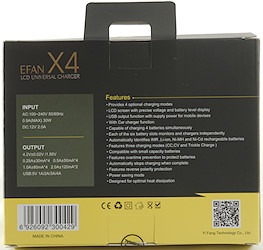


I got the charger in a cardboard box, if has a good picture of the charger and specifications on the back.

The pack included the charger, a power supply, a car cable and a instruction sheet
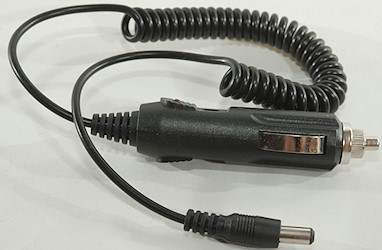

The car cable is fairly standard.
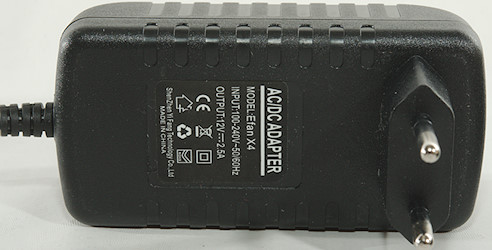
The power supply is a standard plug pack.
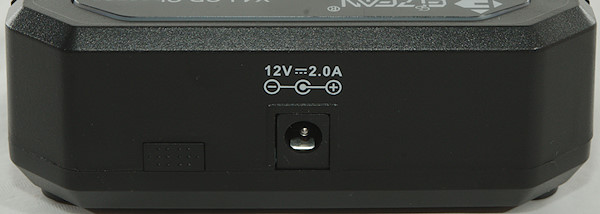
The charger has a 12V input on the back.
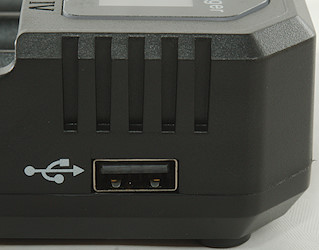
And a usb output on the side for power bank usage.
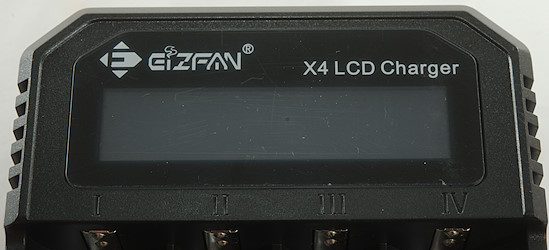
The charger uses a LCD display for user interface.

Together with a single button on the back of the charger.

All segments are shown during power on.

Charging on battery with 2A, the battery symbol is animated while charging.
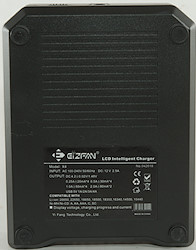
The charger has specifications on the bottom.
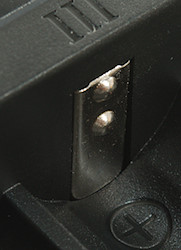
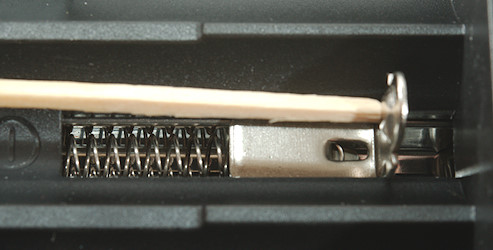
The charger has the usual slider construction. It can handle from 31mm to 71mm, this is most common cells on the market.


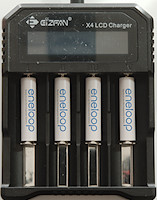
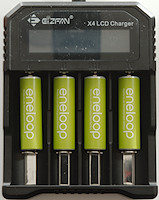
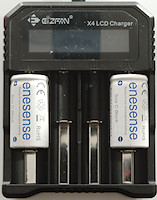
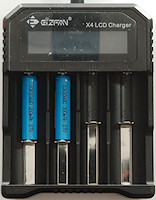
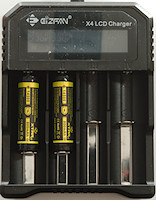


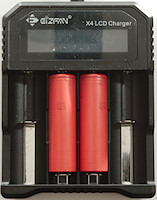
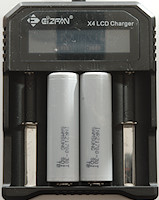
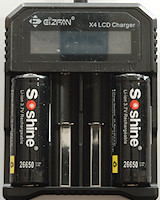
Measurements charger
- Without power it will discharge a LiIon battery with 15mA to 25mA
- Without power it will discharge a NiMH battery with less than 0.5mA
- A full LiIon battery will be charged with 0.6ma
- The current settings are 0.25, 0.5, 1A and 2A for both LiIon and NiMH
- The 2A setting is only available with 1 or 2 cells in the charger.
- Power consumption when idle without batteries is 0.5 watt.
- Below 0.2V the charger will not detect a battery
- Up to 2V the charger assumes NiMH
- Above 2.1V the charger will assume LiIon and use selected current.
- The voltmeter is within 0.06V
- The voltmeter is also active after charge termination
- Charger will restart if battery voltage drops below 3.9V
- The charger will restart when a battery is inserted or power is cycled.
Charging LiIon
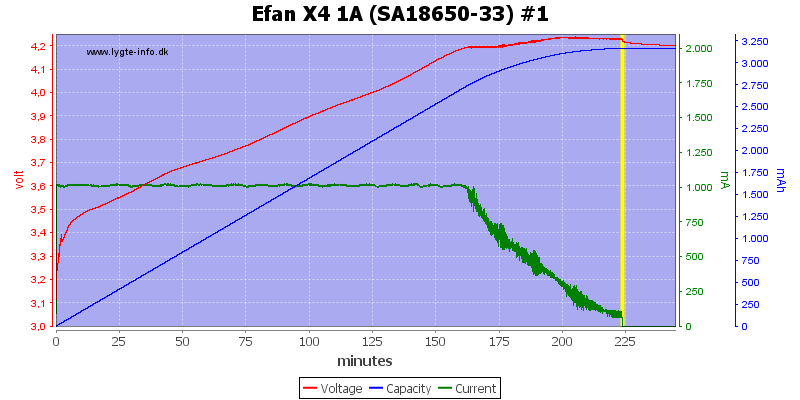
This is a nice CC/CV charge curve with about 60mA in termination current.

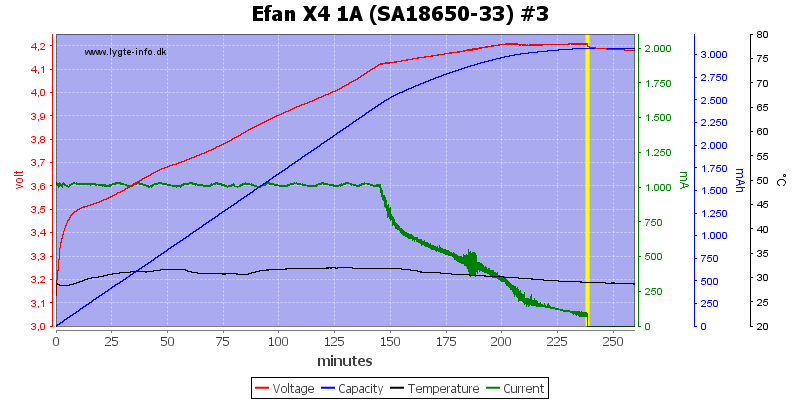

The other 3 slots are similar.
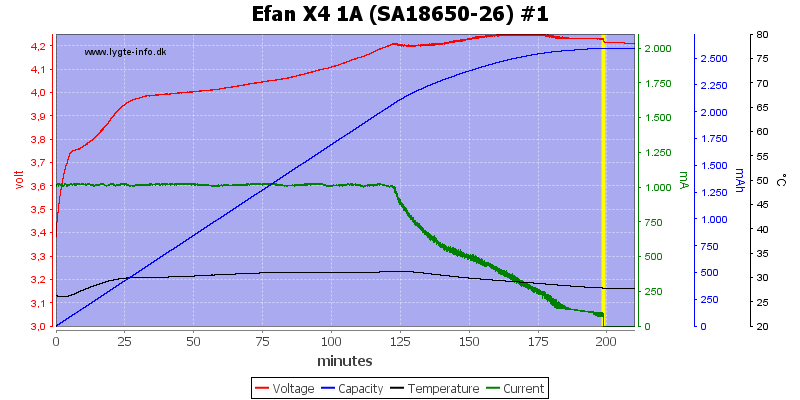
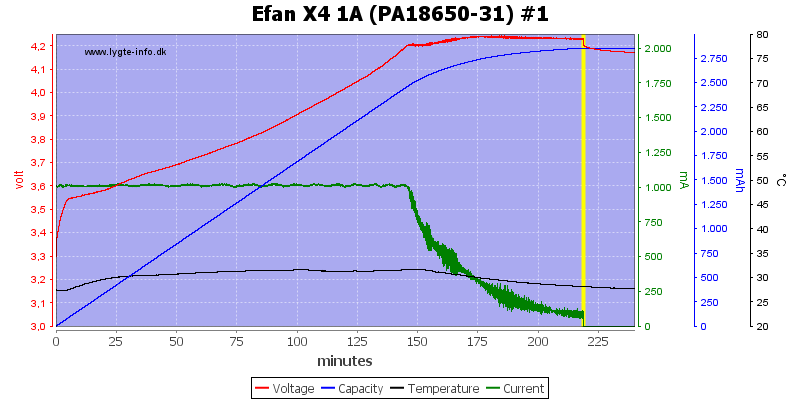
The other cells are also handled fine.
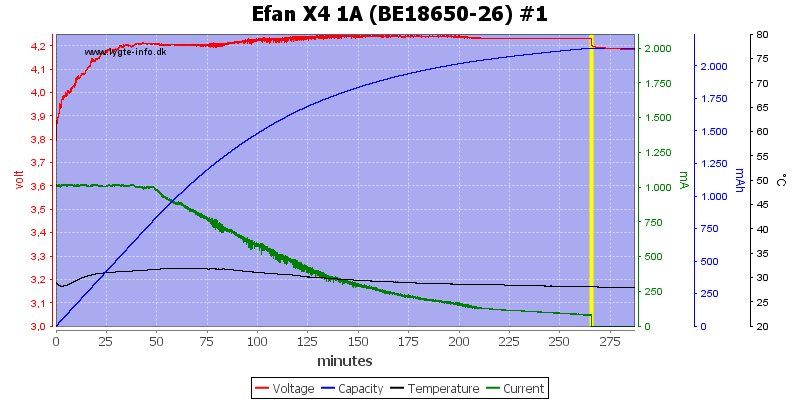
The old cell, as expected, goes to CV phase after a short time on the charger.
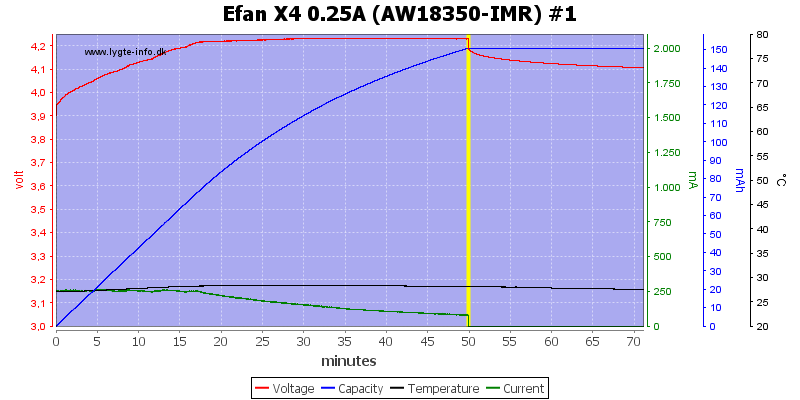
For this old and worn down cell I used 0.25A charging and it works fine.
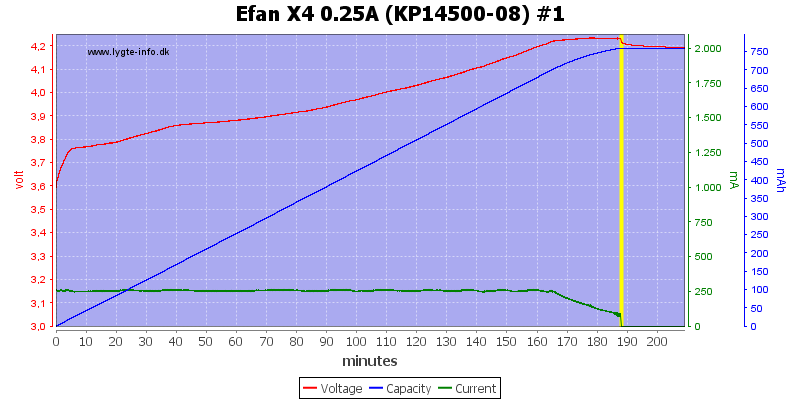
I did also use 0.25A for this cell.
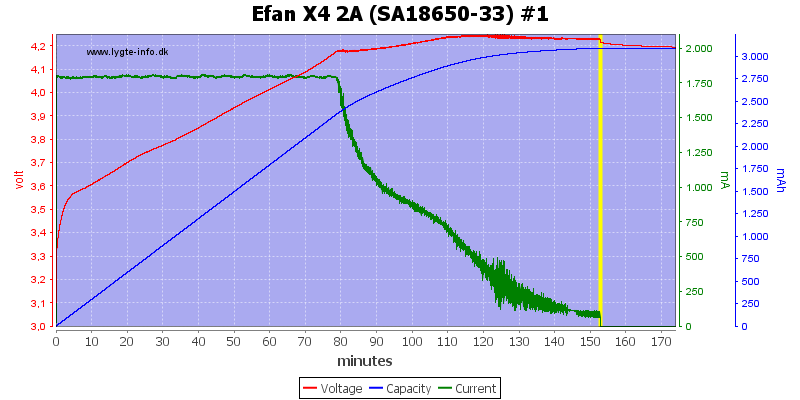
At 2A the termination current is around 90mA
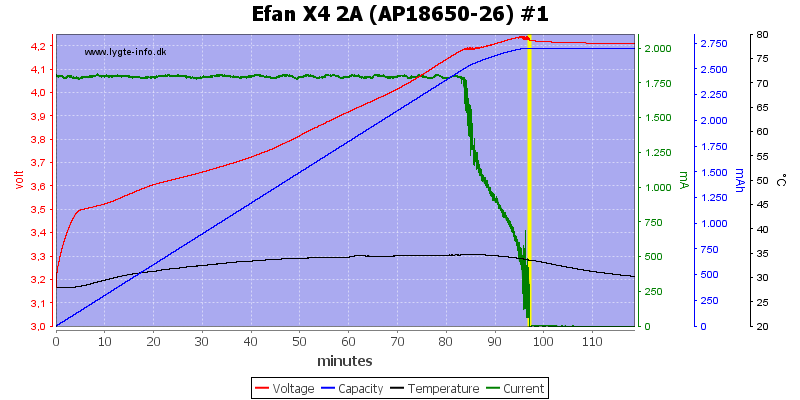
This cell obvious was finished faster than the charger expected and it stopped charging, but without the final tapering of current. It is probably related to the slightly unstable current when reducing it. The final result is fine.

This also has the abrupt termination, but the cell is fully charged.

With 4 cells the current is reduced to a maximum of 1A and the charger handles all four cells nicely.
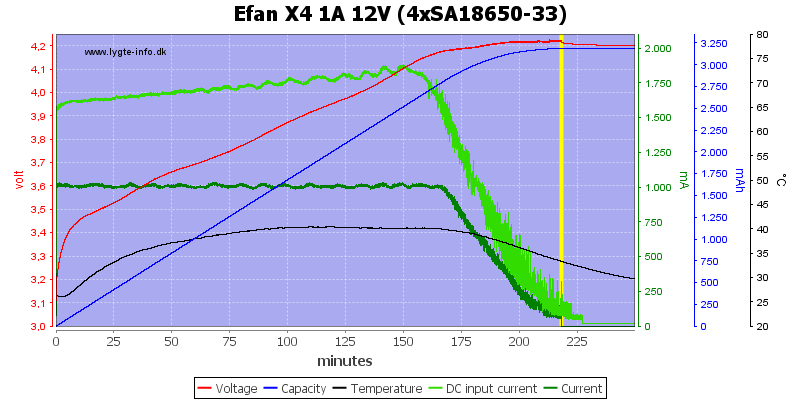
It needs about 1.8A from 12V for this.
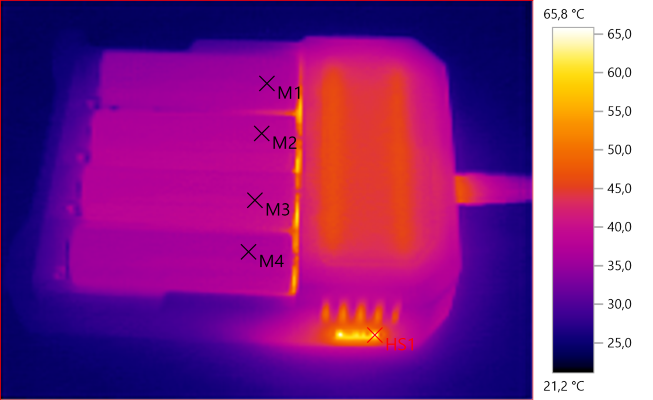
M1: 35.9°C, M2: 37.8°C, M3: 38.8°C, M4: 36.4°C, HS1: 65.8°C
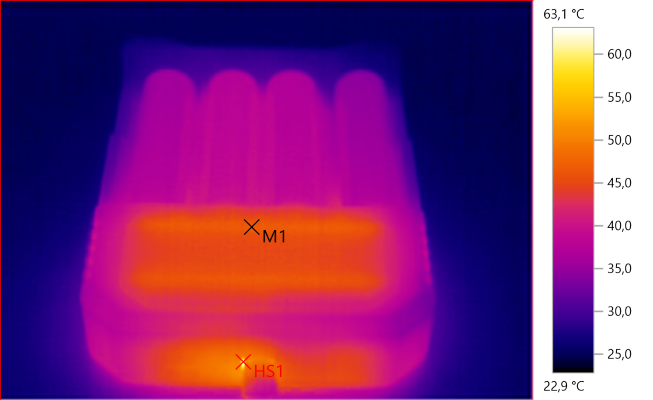
M1: 46.5°C, HS1: 63.1°C

The charger needs about 4 seconds to start.
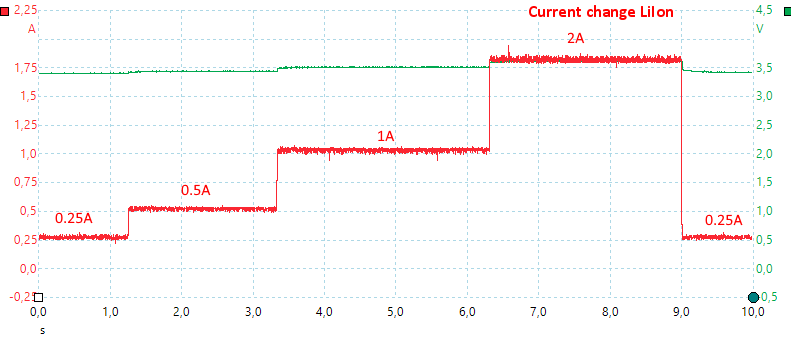
The current can be changed at any time.
Charging NiMH
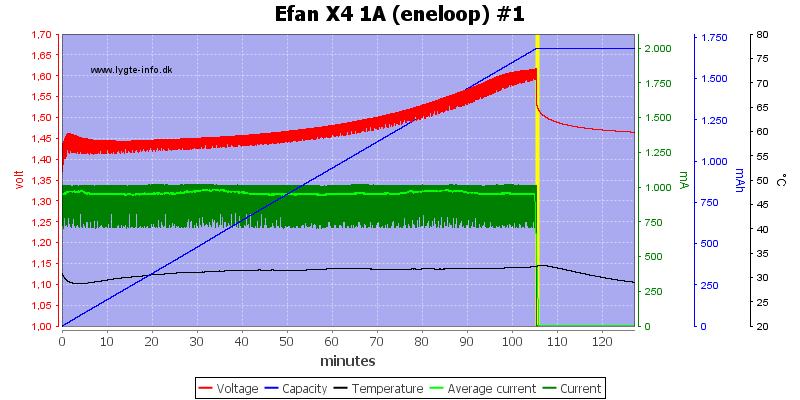
The charger uses voltage termination and the trip point looks fine for eneloop. As usual this algorithm may undercharge the batteries slightly.

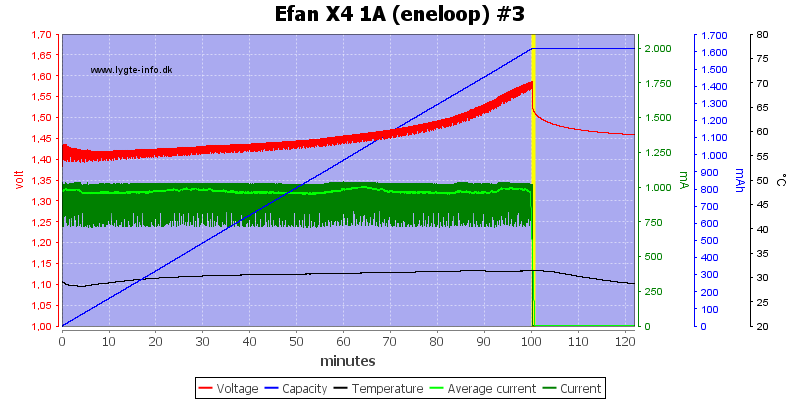
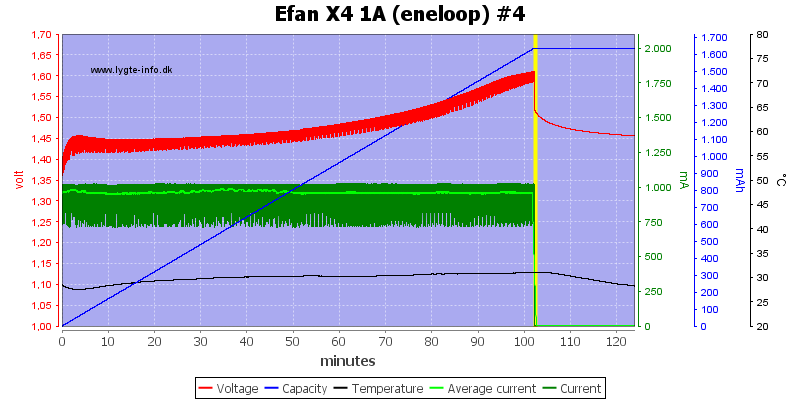
All slots looks similar.
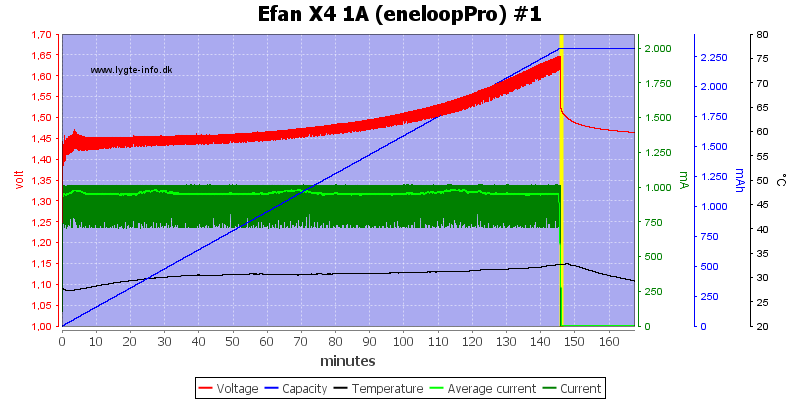
The eneloopPro is also voltage termination.
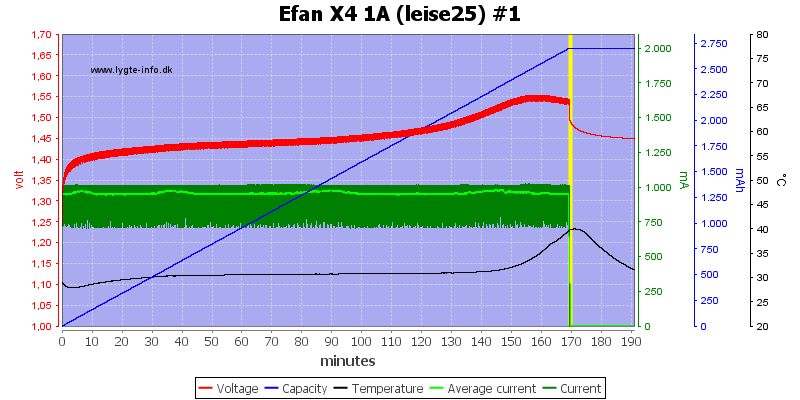
With the Leise the charger uses -dv/dt, because it is filled at a slightly lower voltage.
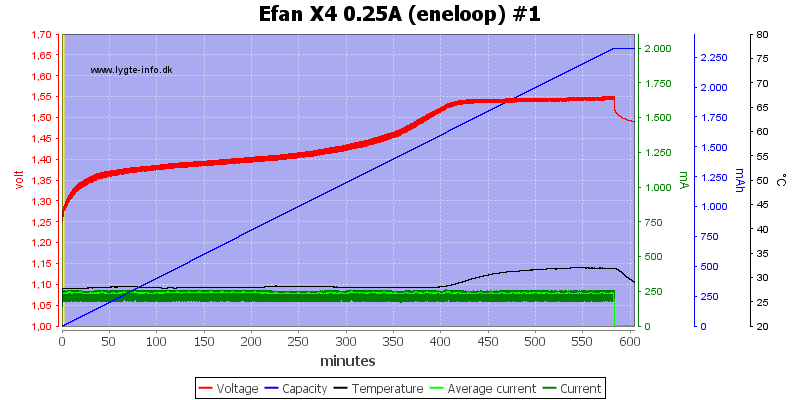
The charger is slow to termination when using 0.25A charge current for AA cells (It is a user error to charge with this low current on a 2000mAh cell).
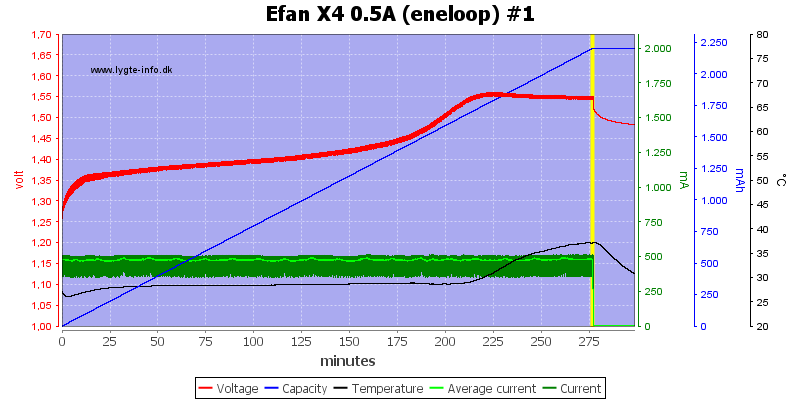
At 0.5A it is better, but still on the slow side.
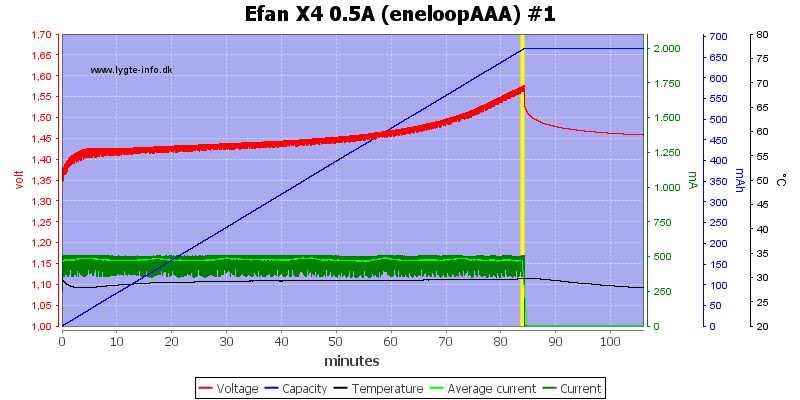
The AAA cells is charged fine at 0.5A
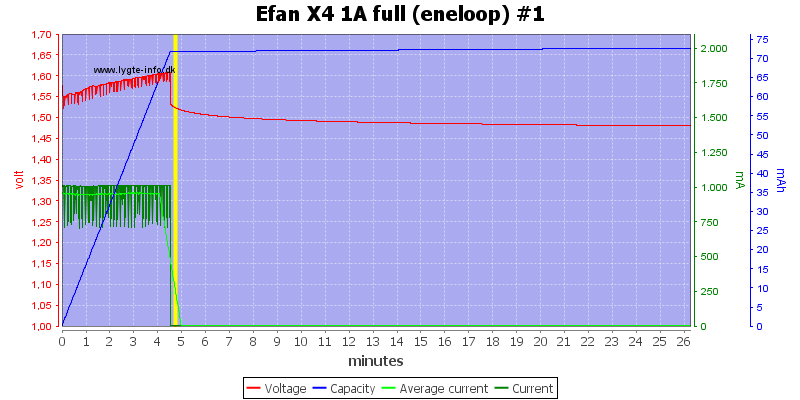
A full eneloop is stopped within 5 minutes due to voltage termination.
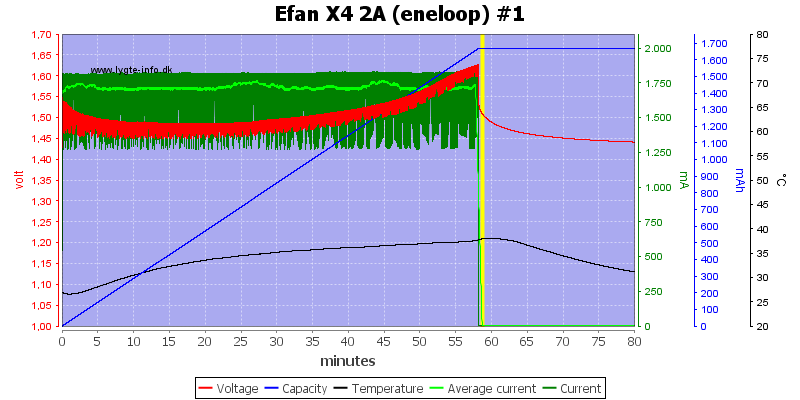
The 2A curve looks similar to the other curves, but it do heat the battery.
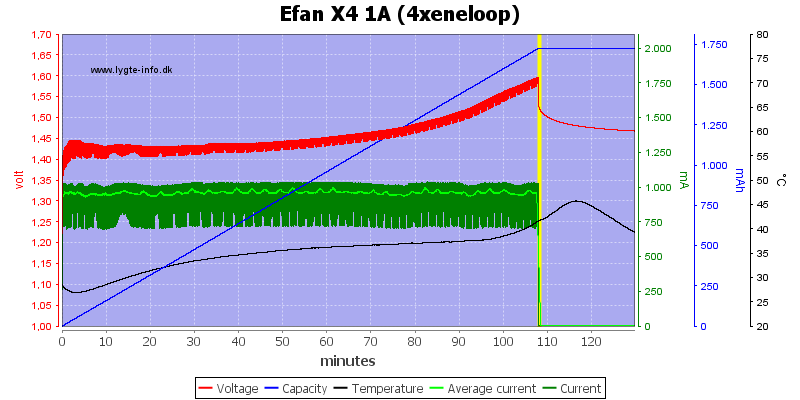
With 4 cells the current is limited to 1A, it looks like at least one of the eneloops used -dv/dt termination.
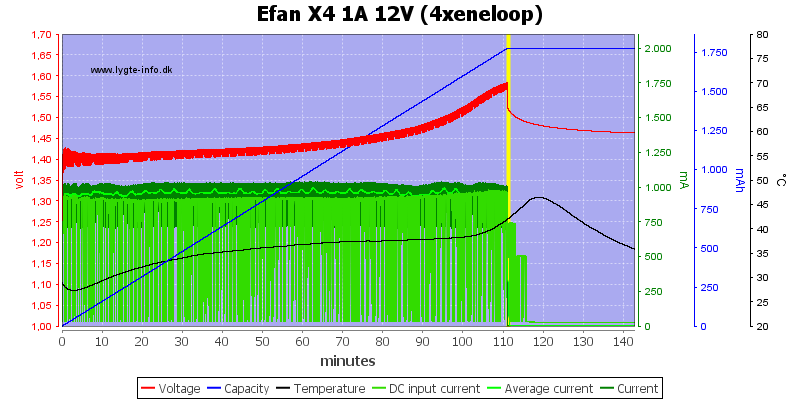
The current consumption from the 12V power is around 1A when charging four cells.
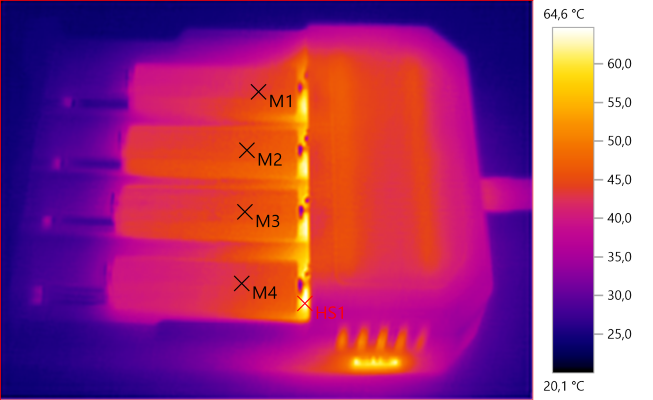
M1: 43.7°C, M2: 45.2°C, M3: 44.8°C, M4: 43.4°C, HS1: 64.6°C
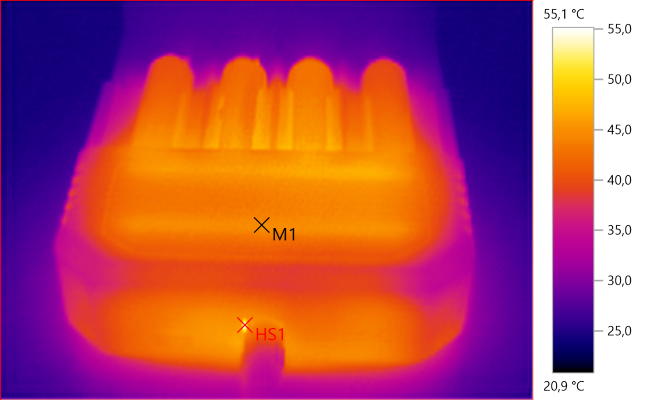
M1: 44.6°C, HS1: 55.1°C
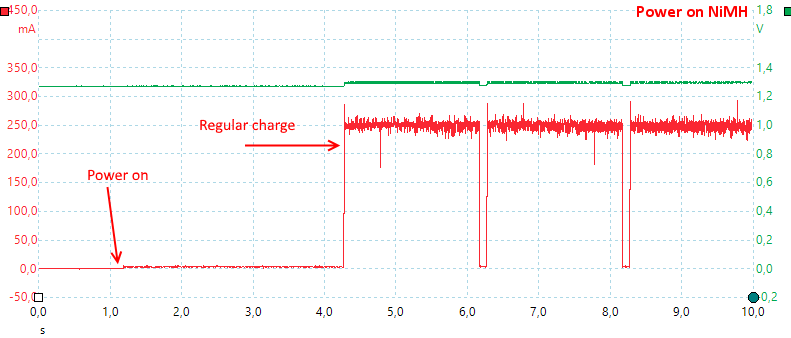
The charger also needs about 3 seconds to start here, as usual with NiMH the charge current is pulsed.
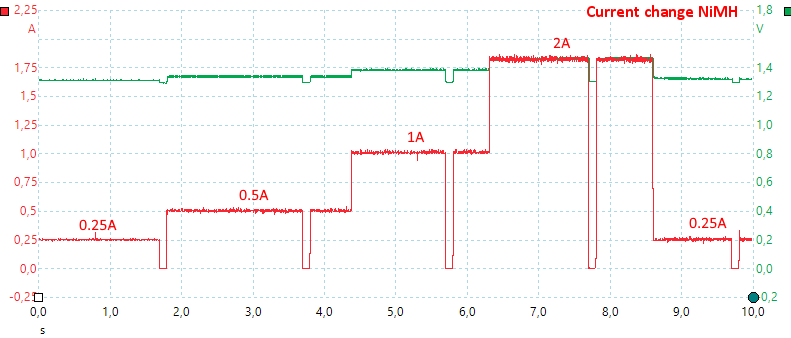
The current can be changed at any time.
Usb out (Power bank)
- Without power it will discharge a LiIon battery with 15mA to 25mA
- Without power and usb loaded it will discharge a LiIon battery with 100mA or more, even at low voltages.
- Usb output is off when the charger is powered.
- Display is on and shows voltage when using usb out, but backlight will turn off (Press button to turn on).
- USB output is always on, when a charged battery is in the unpowered charger.

The usb output can deliver about 1.4A with one battery, before output starts to drop.

With two batteries the current is 1.3A (The slightly lower current may be due to battery voltage). There is no real overload protection visible.
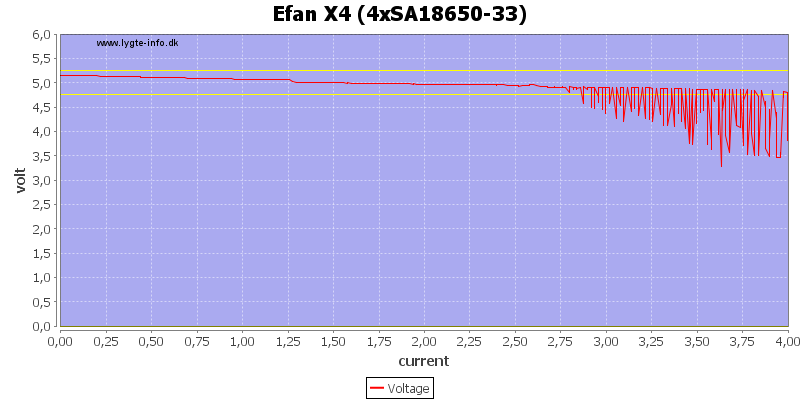
With 4 batteries it was possible to draw above 4A, but output voltage was only stable up to about 2.8A.
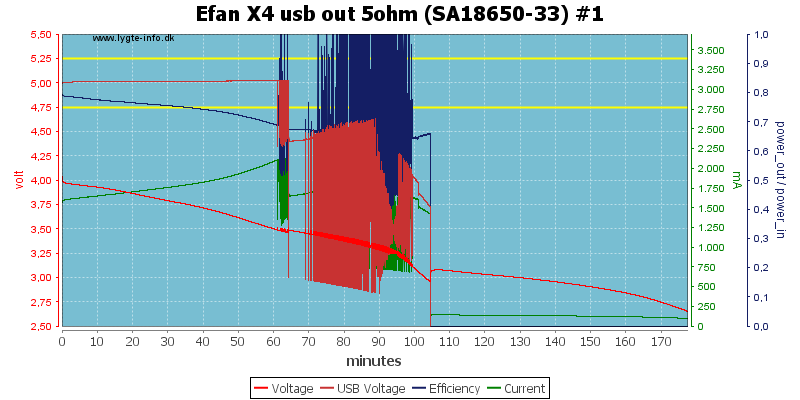
With a single battery I could draw 1A for 1 hour, before output looked strange, this is not very good.
When the battery is empty the charger continues to draw current from the battery, this is bad.

With 4 batteries and 2A load the output voltage stayed fairly stable for two hours, but it did not really use the battery where my sense equipment was connected, it was first used later on.

When using usb output the display stays on and shows voltage, this is very nice and it told me when to stop the above curve. As can be seen one battery is down to 2.4V and another at 2.8V and the other two above 3V
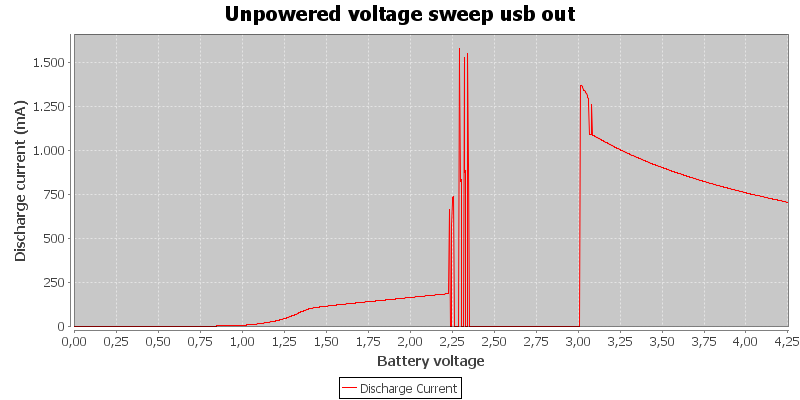
Slowly dropping the battery voltage with a usb load on shows that it stops drawing power at 3V, what cannot be seen is the 0.5mA draw that is still present and will pull the battery down.
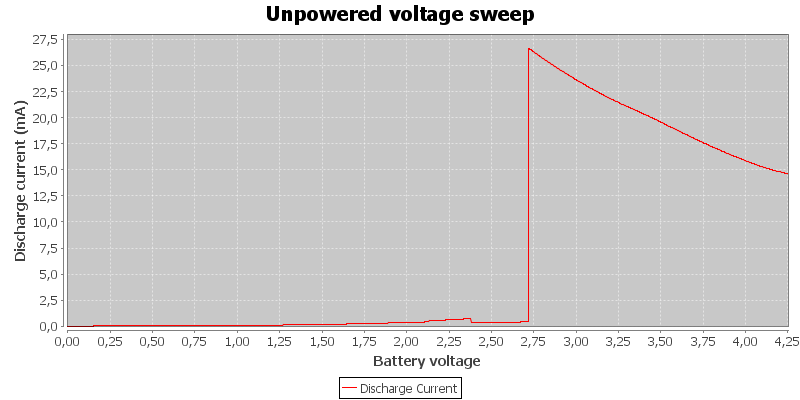
If I do the same test without any load on the usb output it is easier to see.

At 0.5A the noise is 2mV rms and 89mVpp

At 1A the noise is 2mV rms and 70mVpp

At 2.5A (Using 4 batteries) the noise is 3mV rms and 23mVpp, all very low values.
Testing with 2830 volt and 4242 volt between mains and low volt side, did not show any safety problems.
Conclusion
The charger handles a wide variety of cell sizes with either LiIon or NiMH chemistry, with current selection of 0.25A to 2A (two cells only) it can handle both small cells and fast charge larger cells.
That the display shows voltage when using the power bank is nice, but the price is high current consumption. A better boost converter would also be nice and the missing low voltage cut-off is a serious problem for a power bank.
I will rate the charger function as good, but the power bank is only usable.
Notes
The charger was supplied by Efan for review.
Here is an explanation on how I did the above charge curves: How do I test a charger













































































